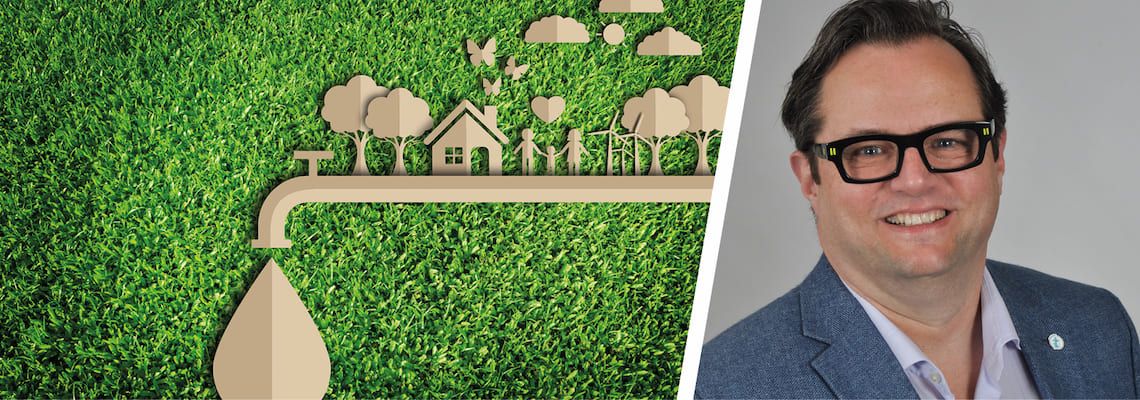Growing up in the Netherlands but now living in Saudi Arabia, Paul Buijs shares his views on water pricing and subsidies.
A small price for the privileged
Very few people are aware of their daily water consumption, tariff and total cost. This is even the case among water professionals.
I used to pass the time at conferences and exhibitions (when we still had them) by asking people what they paid for water. And I don’t recall meeting someone who knew what he or she was paying.
Thanks to electronic invoicing, I was able to answer my own question easily. In the Netherlands, last year I paid €133.54 for a full year: not an amount memorable for a privileged person.
Tax or subsidy and funding of research
In the Netherlands, drinking water is not subsidised. In fact, 30 per cent of my water bill is tax, 9 per cent VAT on consumption and the rest is a tax on potable water. This tax on potable water is the government's way to reduce water consumption, which it does not.
“Unfortunately, as the tax on water has gone up, the government spending on research on water has gone down significantly.”
Unfortunately, as the tax on water has gone up, the government spending on research on water has gone down significantly. Our national iconic water research institutes KWR Water Research Institute, and Wetsus are funded predominantly by our water companies, water technology industry, and in the case of the latter, by the regional government.
In my current home country, Saudi Arabia, water is highly subsidised. If I would use the same amount of water and I lived outside the university campus, I would have to pay an equivalent of €3 for my annual water bill, despite the fact that water production here is more expensive. The Kingdom, however, strongly subsidises water research.
Accountability
The average per capita consumption in the Netherlands is around 120 litres/day (l/day). In Saudi Arabia, the official number is 320 l/day and from this, non-revenue water is between 2-32 per cent respectively.
It would be easy to say that consumption and leaks do not matter when the tariff is low. However, history paints a different picture.
In the 1970s, the per capita consumption in the Netherlands was around 250 l/day. I grew up in that time and really could not tell you how we used that much water. In our street few people had cars to wash, the gardens were small, and people would wear clothes for several days.
So where was it used? To start, there was a careless attitude towards water that I recognise in areas that just have installed in-house plumbing. In areas with interrupted supply, people had one tap continuously running to keep a tank at maximum level all the time, just in case the supply stops.
A matter of perspective
The situation is similar to other countries I have visited. In public restrooms, taps are running permanently, so you do not have to touch them. It is cheaper to run the tap than to install an automatic one.
Now imagine if your family had to get by on two buckets of water per day, carried from a central well. It is amazing just to see running water in your house, let alone how others can be so wasteful with such a precious resource.
Back in the Netherlands, the consumption was not reduced due to an increase of tariff, but by raising public awareness.
The Dutch, publicly-owned water supply companies drive campaigns to reduce consumption, household appliances are rated for water consumption, and water-saving showerheads and toilets are promoted.
Meanwhile, in Saudi Arabia, the end to water subsidies has been announced in the national strategy document, Saudi Vision 2030. The goal is to further reduce consumption and non-revenue water.
The country has a stepped tariff system: each of the step tariffs is so low, however, that only the highest tariff covers the cost of water production and distribution.
Getting to the value
Costs and a small margin to allow for future investments are the best way to determine the water tariff, in my view. Structures should be in place to ensure that all people, regardless of their income, have access to safe drinking water.
“Appreciation of the value of water is needed to limit the use to a reasonable level. The industry needs the input of social scientists and marketing experts.”
However, appreciation of the value of water is needed to limit the use to a reasonable level. To get there, the water industry needs the input of social scientists and marketing experts. Technology does not solve everything.

Paul Buijs
Center Liaison Officer
King Abdullah University of Scient and Technology Water







